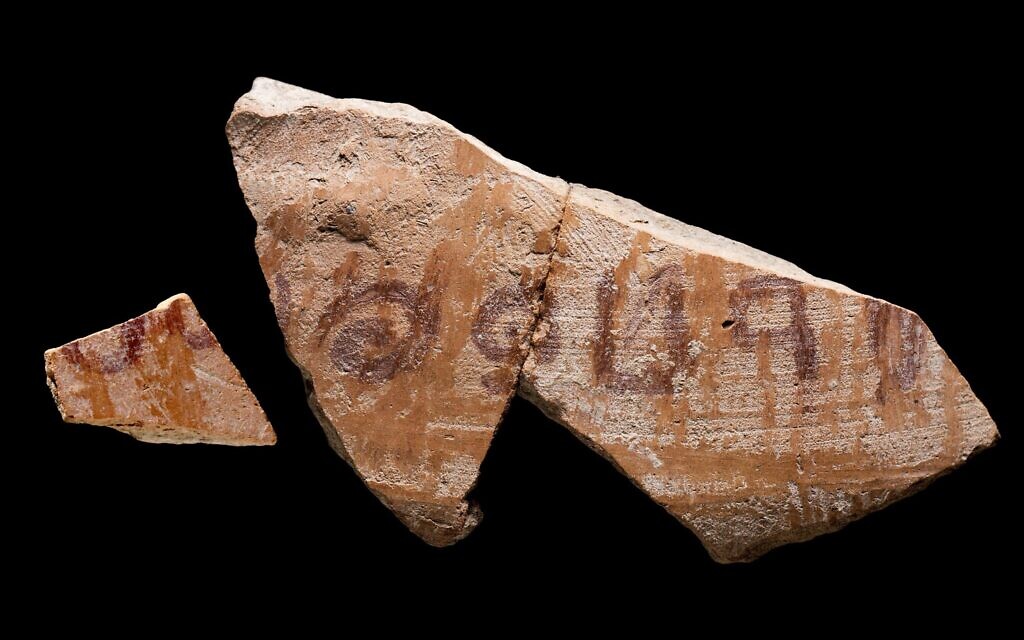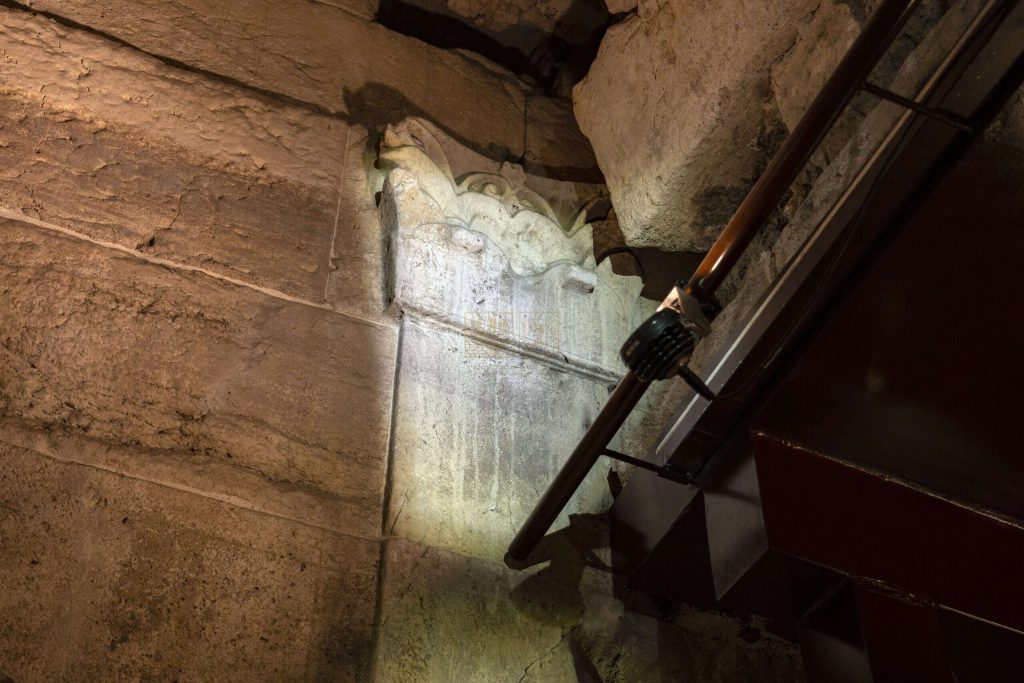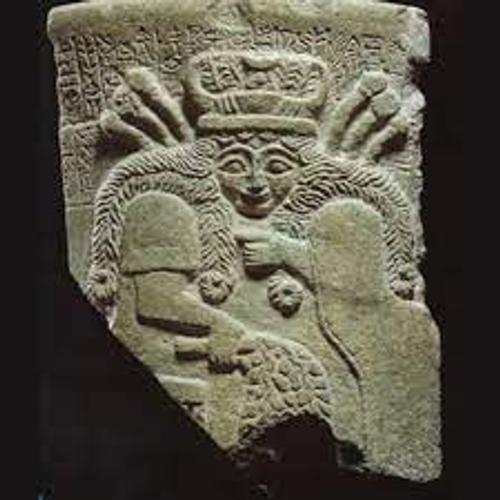
Archaeologists in Jerusalem have found evidence of damage to buildings and pottery that may have been caused by a huge, eighth-century B.C.E. earthquake mentioned in the biblical books of Amos and Zechariah. Excavations led by the Israel Antiquities Authority (IAA) and the Ir David Foundation unearthed a layer containing the ruins in the east Jerusalem neighborhood of Silwan, reports Nir Hasson for *Haaretz*. The findings add to evidence of the earthquake previously discovered elsewhere in Israel and in the seabed of the Dead Sea. The researchers say they considered other possib... read more
The remains of a rat from some tens of thousands of years ago could shed light on the potential existence of a travel corridor of temperate climate from Africa to Europe, Israeli researchers said Tuesday. The remains of a maned, or crested, rat were found in Israel during excavations in 2016 by archeologists searching for ancient scrolls. Hundreds of bones were found in a cave in the southern Judean Desert. The researchers said that the presence of the rat’s remains suggested that there may have been a corridor of land to Israel from East Africa with a similarly damp climate t... read more
A team of geneticists and archaeologists from Ireland, France, Iran, Germany, and Austria has sequenced the DNA from a 1,600-year-old sheep mummy from an ancient Iranian salt mine, Chehrabad. This remarkable specimen has revealed sheep husbandry practices of the ancient Near East, as well as underlining how natural mummification can affect DNA degradation. The incredible findings have just been published in the international, peer-reviewed journal *Biology Letters*. The salt mine of Chehrabad is known to preserve biological material. Indeed, it is in this mine that human remains

Complete article Excavations in Judean foothills uncover small jug from 1,100 BCE that could be inscribed with ‘Jerubbaal’; first evidence of a name from Book of Judges on a contemporary artifact - - - - - - [image: The 'Jerubbaal' inscription, written in ink on a pottery vessel, discovered at Khirbet el Rai. (Dafna Gazit, Israel Antiquities Authority)] The 'Jerubbaal' inscription, written in ink on a pottery vessel, discovered at Khirbet el Rai. (Dafna Gazit, Israel Antiquities Authority) - [image: Aerial view of Khirbet el Rai, near Lachish i... read more
Complete article An archaeological survey in the northeast of the Binyamin Region conducted by the Martin Szuz Department of Land of Israel Studies and Archaeology at Bar-Ilan University has turned up two rare 2,000-year-old coins at two adjacent sites. One coin, discovered at Khirbet Jabaat, dates back to the Jewish revolt against the Romans and was minted in the year 67 C.E. One side of the coin bears a depiction of a grape leaf and the Hebrew inscription *Herut Zion* (Freedom for Zion), while the other side is imprinted with a cup and the inscription “Year Two.” Dr. Dvir Ravi... read more

Israeli researcher Filip Vukosavovic displays a missing section of the city wall of Jerusalem that the Babylonians encountered on the eve of its destruction in 586 BC, after it was excavated by the Israel Antiquities Authority at the City of David national park, in Jerusalem on July 14, 2021. According to the researchers, this find connects additional sections of the wall, which were uncovered decades ago, and proves, that the eastern slope of the City of David was protected by a single impressive fortification line. Near the wall, a number of finds were uncovered such as a Babyl... read more

One of Most Magnificent Bayis Sheini-Era Buildings Discovered in Yerushalayim Open to Public (Israel Antiquities Authority) The Western Wall Heritage Foundation and the Israel Antiquities Authority are enabling the public to view impressive new sections of one of the most magnificent public buildings uncovered from the *Second Temple* period. Part of the structure, to the west of Wilson’s Arch and Har HaBayis, was discovered and documented by Charles Warren in the 19th century, followed by various archaeologists in the 20th century. Now that its excavation is complete, we know ... read more

Researchers have discovered at the site of Çatalhöyük (Anatolia, Turkey) a wide variety of hitherto unknown wild resources. UNIVERSITAT POMPEU FABRA - BARCELONA Research News SHARE PRINT E-MAIL [image: IMAGE] IMAGE: A) SET OF STONE TOOLS, STORAGE AREA OF BUILDING 52; B) USE-WEAR TRACE OBSERVED ON THE SURFACE OF STONE IMPLEMENTS; C) WHEAT INFLORESCENCE PHYTOLITH; D) WHEAT STARCH GRAIN. view more CREDIT: UPF A study conducted by researchers from the UPF Culture and Socio-Ecological Dynamics research group (CaSEs) and the University of Leicester (UK) has provided a highly d... read more

Statistical methods designed for cosmology reveal tomb distribution in Sudan over millennia governed by environment and social factors PLOS Research News Sudanese Islamic burial sites are distributed according to large-scale environmental factors and small-scale social factors, creating a galaxy-like distribution pattern, according to a study published July 7, 2021 in the open-... read more
She Who Wrote: Enheduanna and Women of Mesopotamia, Morgan Library & Museum

Fragment of a vessel with frontal image of goddess, Mesopotamia, Sumerian Early Dynastic III period, ca. 2400 BC. The Morgan Library & Museum will present *She Who Wrote: Enheduanna and Women of Mesopotamia, 3400-2000 BC* opening September 10, 2021, and running through January 16, 2022. The exhibition brings together for the first time a comprehensive selection of artworks that capture the rich and shifting expressions of women’s lives in ancient Mesopotamia during the late fourth and third millennia BC. It centers on the high priestess and poet Enheduanna (who flourished around 230... read more

Research News SHARE PRINT E-MAIL [image: IMAGE] IMAGE: FOSSILISED SQUALICORAX TOOTH NR. #07815 FROM THE JERUSALEM SITE. view more CREDIT: OMRI LERNAU Scientists have found an unexplained cache of fossilised shark teeth in an area where there should be none - in a 2900 year old site in the City of David in Jerusalem. This is at least 80 km from where these fossils would be expected to be found. There is no conclusive proof of why the cache was assembled, but it may be that the 80 million-year-old teeth were part of a collection, dating from just after the death of King S... read more
Scientists reconstruct Mediterranean silver trade, from Trojan War to Roman Republic

PRINT E-MAIL [image: IMAGE] IMAGE: A HACKSILBER HOARD DATED TO THE MIDDLE OF THE ELEVENTH CENTURY BCE FOUND BY THE LEON LEVY EXPEDITION TO ASHKELON.view more CREDIT: WE ARE GRATEFUL TO L. E. STAGER AND D. MASTER, DIRECTORS OF THE LEON LEVY EXPEDITION TO ASHKELON, AND TO D. T. ARIEL, FOR ALLOWING US TO PUBLISH THESE PHOTOGRAPHS.... Scientists have reconstructed the Eastern Mediterranean silver trade, over a period including the traditional dates of the Trojan War, the founding of Rome, and the destruction of Solomon's Temple in Jerusalem. The team of French, Israeli and Aus... read more

MAX PLANCK INSTITUTE FOR THE SCIENCE OF HUMAN HISTORY Research News SHARE PRINT E-MAIL [image: IMAGE] IMAGE: AERIAL VIEW OF ALALAKH IN THE AMUQ PLAIN (TURKEY). view more CREDIT: MURAT AKAR, TELL ATCHANA EXCAVATIONS The Bronze Age in the eastern Mediterranean has long been considered by researchers to have been the 'first international age,' especially the period from 1600-1200 BC, when powerful empires from Anatolia, Mesopotamia, and Egypt set up large networks of subordinate client kingdoms in the Near East. These empires fought, traded, and corresponded with one another,... read more
Working with environmental engineers, archaeologists at Newcastle University, UK, used modern air quality monitoring methods to assess the impact of domestic fuel burning inside buildings at Çatalhöyük, in Turkey, one of the world's earliest settlements. A typical house at Çatalhöyük, a UNESCO World Heritage site, had a domed oven set against the south wall, located beneath an opening in the roof. In the 1990s, a replica of one of these houses was built at Çatalhöyük to show visitors what they may have looked like during the time of occupation. Although previous studies have show... read more
------------------------------ A cluster of comet fragments believed to have hit Earth nearly 13,000 years ago may have shaped the origins of human civilisation, research suggests. Possibly the most devastating cosmic impact since the extinction of the dinosaurs, it appears to coincide with major shifts in how human societies organised themselves, researchers say. Their analysis backs up claims that an impact occurred prior to start of the Neolithic period in the so-called Fertile Crescent of southwest Asia. During that time, humans in the region -- which spans parts of modern-... read more
In two companion studies, researchers reveal a previously unknown population of archaic hominin- the "Nesher Ramla *Homo*" - from a recently excavated site in Israel dated to roughly 140,000 to 120,000 years ago. Analysis of both the fossils and associated artifacts from the site suggests that the group represents a last surviving population of Middle Pleistocene *Homo*, characterized by a distinctive combination of Neanderthal and archaic human features and technology that until only rece... read more

Research News [image: IMAGE] IMAGE: .STATIC SKULL & MANDIBLE & PARIETAL ORTHOGRAPHIC. view more CREDIT: TEL AVIV UNIVERSITY - The discovery of a new Homo group in this region, which resembles Pre-Neanderthal populations in Europe, challenges the prevailing hypothesis that Neanderthals originated from Europe, suggesting that at least some of the Neanderthals' ancestors actually came from the Levant. - The new finding suggests that two types of Homo groups lived side by side in the Levant for more than 100,000 years (200-100,000 years ago), sharing knowledge ... read more
UNIVERSITY OF COLOGNE Research News SHARE PRINT E-MAIL An international research team led by Professor Dr Frank Schäbitz has published a climate reconstruction of the last 200,000 years for Ethiopia. This means that high-resolution data are now available for the period when early *Homo sapiens*, our ancestors, made their way from Africa to Europe and Asia. Schäbitz and his colleagues determined the dates using a drill core of lake sediments deposited in southern Ethiopia's Chew Bahir Basin, which lies near human fossil sites. Temporal resolution of the samples, reaching ne... read more

TRINITY COLLEGE DUBLIN Research News SHARE PRINT E-MAIL [image: IMAGE] IMAGE: INDENTATION OF SEVERAL GOAT HOOVES IN A BRICK FROM THE ARCHAEOLOGICAL SITE OF GANJ DAREH. New research has revealed the genetic makeup of the earliest goat herds. The findings, assimilated from DNA taken from the remains of 32 goats that died some 10,000 years ago in the Zagros mountains, provide clues to how early agricultural practices shaped the evolution of these animals. Archaeological evidence has previously poin... read more
Jebel Sahaba: A succession of violence rather than a prehistoric war

CNRS Research News SHARE PRINT E-MAIL [image: IMAGE] IMAGE: PROJECTILE IMPACT PUNCTURE WITH AN EMBEDDED LITHIC FRAGMENT IN THE POSTERIOR SURFACE OF THE LEFT HIP BONE OF INDIVIDUAL JS 21. view more CREDIT: © ISABELLE CREVECOEUR/MARIE-HÉLÈNE DIAS-MEIRINHO Since its discovery in the 1960s, the Jebel Sahaba cemetery (Nile Valley, Sudan), 13 millennia old, was considered to be one of the oldest testimonies to prehistoric warfare. However, scientists from the CNRS and the University of Toulouse - Jean Jaurès (1) have re-analysed the bones preserved in the British Museum (London... read more
No comments:
Post a Comment